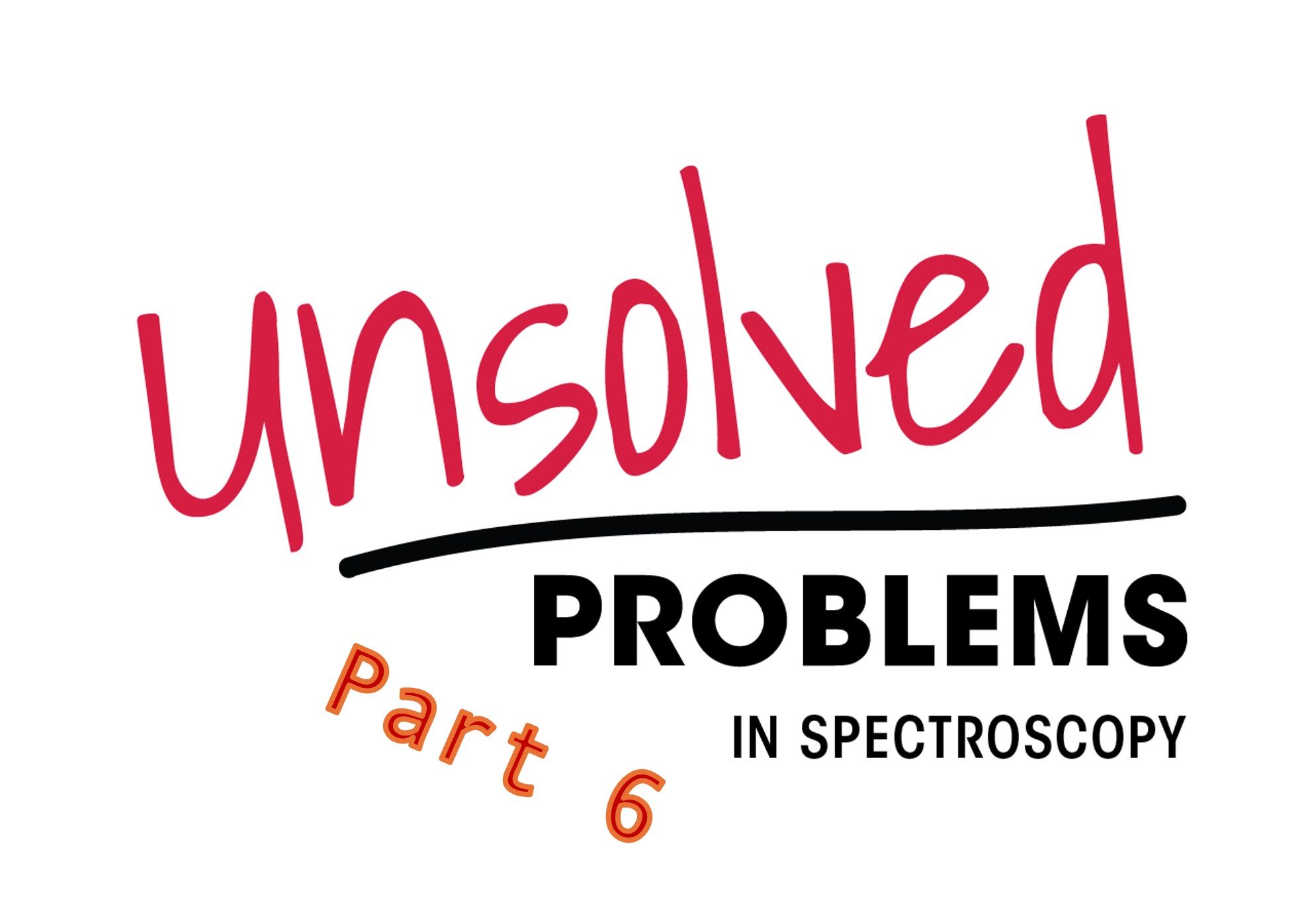Article
Spectroscopy
Spectroscopy
Analysis of FDA Infrared 483 Citations: Have You a Data Integrity Problem?
Author(s):
Analysis of FDA Form 483 observations and warning letters for infrared spectrometers reveals a range of data integrity problems and a lack of laboratory procedures for the technique. Is your laboratory in the same situation?
Analysis of 47 FDA Form 483 observations and warning letters for infrared spectrometers reveals a spectrum of data integrity problems and a lack of laboratory procedures for the technique. Is this your laboratory?
Since the Able Laboratories data falsification case in 2005 (1), there has been a regulatory focus on the lack of data integrity with chromatography data systems. This scrutiny has focused on inappropriate access privileges with conflicts of interest, deletion of data files, failure to configure the application, testing into compliance, and failure to review audit trail entries (2). More recently, inspection focus has moved to the use of peak integration to integrate into compliance and masking potential impurities (3). There have been many warning letters as a result of these noncompliances and poor data management practices; this is due to chromatography being a major technique that can comprise between 40–70% of a laboratory's workload. You may ask, "Why the focus on chromatography in a publication on spectroscopy?" Just think of chromatography as sample preparation for spectroscopy!
In contrast, there are relatively few FDA warning letters involving spectroscopic techniques. An analysis of FDA warning letters citing infrared spectrometers was published in 2014 (4).
Originally, we were going to write a column looking at some of the data integrity issues that could occur with Fourier transform infrared spectroscopy (FT-IR) analysis, with a few regulatory citations to illustrate each point. However, given the bonanza of Form 483 observations and warning letters that have been issued by the FDA, we realized that an analysis of these would provide a great overview of the current regulatory problems facing the technique, before discussing specific topics in the future.
Understanding Our Approach
In this column, we present an analysis of 47 Form 483 observations and warning letters issued between 2012 and 2018 (5–51). It should be noted that many of these Form 483 observations are not generally available publicly. Therefore, these observations, the regulatory focus on infrared, and the conclusions we have drawn may be new to laboratories that only review FDA warning letters. We have taken each citation or observation and broken it down into one or more data integrity areas; therefore, a single observation can have one or more data integrity noncompliances. For example:
- The application does not have an audit trail. This is a single 483 observation and a single data integrity issue.
- In contrast, here is a more complex citation: System audit trails are not available on the two FT-IR instruments, and quality control (QC) operators have the option of not saving the IR data. This citation will be classified into two entries; one of no audit trail, and another of application software design because data are not automatically saved. This is a simple example of compound data integrity problems, but some citations can be far more detailed and complex.
Therefore, there is not a one-to-one correlation between all non-compliances analyzed and the data classification presented here.
The noncompliances have resulted in a total of 104 separate citations for IR analysis that have been classified and discussed below. Some of these are self-explanatory, and will not be discussed in part due to space considerations and because the solution is obvious (such as no software validation, for example). In the references, we have included the FDA Facility Establishment Identifier (FEI), which is the way the FDA identifies a specific site in a company. Where there are different FEI numbers for the same organization, this means that two sites or facilities were inspected.
Our main challenge in this analysis is to interpret a regulatory citation, because we don't know all the circumstances at the time of the observation by an inspector. For example, we don't know the functionality of the application software, so the observation of no system audit trails available as shown above could be a true software design limitation, or, more likely, it could be that the users did not enable this function. We have used our experience and best judgement in classifying each citation in this analysis.
We do not claim that this noncompliance review reflects the total number of 483 observations issued, but, based on the significant number, it is reasonably comprehensive to draw firm conclusions on regulatory gaps involving IR analysis. Enjoy reading about the calamities of others. If any noncompliance mentioned here applies to your laboratory, what are you going to do? We suggest that you remediate the problem before you are included in a future update of this article!
Citations Before the Operational Use of the Instrument
One of the surprises of our analysis is that 42% of the 483 citations occur before the instrument and the associated software application are supposed to become operational. You may doubt this statement, but look at both Table I and Figure 1 and you will see two main areas: inadequate software architecture, and design and failure to qualify, calibrate, or validate the system. The interpretation of these nonconformance data is based on the wording of the 483 observations.
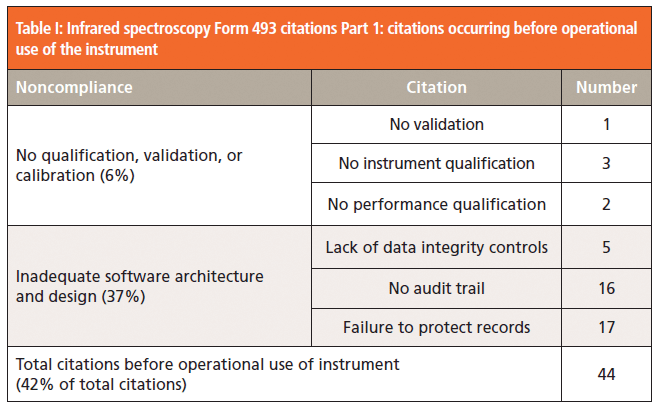
The biggest area, at 37% of the total noncompliances, appears to be due to inadequate architecture and design of the application software that has been purchased by the regulated laboratories. The main problems with the application software are that, as implemented, there are inadequate controls for ensuring data integrity, no audit trail, and the architecture where data files are stored in directories within the operating system and users can delete data without any record in the data system. Again, this is based on the wording inspectors included in each Form 483 report, which represents a high level conclusive summary of the inspection findings, and not a detailed analysis of the root cause associated with each observation. In particular, this represents the inspector's interpretation of what was found about how software was implemented, and not the full compliance capabilities of each software package. In line with FDA warning letters, in many instances, the manufacturer and name of the software was included in many of the examples we reviewed, but we have redacted these in this column.
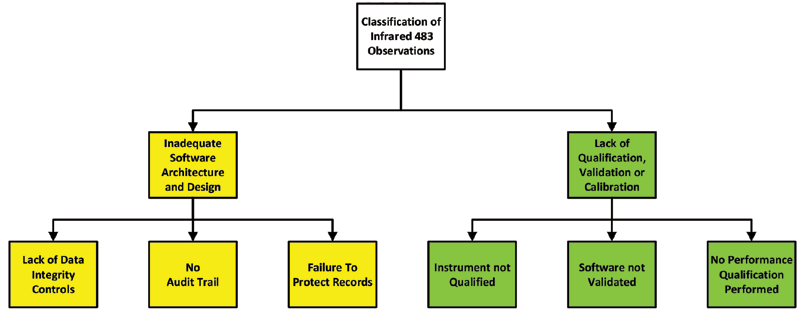
Figure 1: Infrared spectroscopy Form 483 citations occurring before operational use of the instrument and software.
Some of the citations for poor software design are:
- The UV and FT-IR analytical instruments are both equipped with commercial software that does not prevent accidental or intentional deletion of files containing data.
- QC operators have the option of not saving the IR spectra.
- With the FT-IR instrument (QC/FT-IR/201), it was noted that the redacted software had an option to enable or disable automatic saving of measurement available to the chemist.
- FT-IR spectrophotometers used in identity testing were observed to have a "delete" option available to the user.
- The lack of an audit trail was one of the largest number of citations; there was no audit trail in 16 out of 104, or 15%, of all citations.
The use of directories in the operating system for data storage where a user can delete spectral files without any record in the application software (assuming there is a function capable of this) gave rise to 17 citations out of 104, or 16%.
- There were no controls to prevent deletion of data and deleted FT-IR data was observed in the computer recycle bin.
- Data can be deleted off the FT-IR used in the testing of active pharmaceutical ingredient (API). The data can be deleted off the computer systems hard drive, outside of the system software, and therefore not captured by the systems audit trail.
- Laboratory personnel can change and save changes to the date and time setting in the Windows operating system.
The first problem is that regulated laboratories are purchasing IR application software that appears not to have any or inadequate data integrity controls. For example, all data should be saved, and there must be an audit trail built into the system which, once implemented, cannot be turned off. However, suppliers are market driven, and if users don't ask for these features, or help into how to implement them, then they won't be delivered. The responsibility of the supplier to help customers implement a compliant solution is becoming increasingly important. There is also the overall market that a supplier is developing its software for both regulated and unregulated industry sectors. What should occur is that suppliers should be selling configurable software, and also providing assistance in the form of white papers informing users how to configure the software or providing professional services to help implement compliant solutions. The second issue is the overall architecture of the system: Almost all IR software is designed for standalone operation, or can be implemented as a standalone system. Many standalone systems involve files storage in directories in an operating system, and not a database. If the software is designed to support networked implementation, using database storage on a secure network server, this should be implemented. This would remove many of the limitations of standalone systems, such as backup, as this would be performed by the IT department.
Part of the problem is that many software applications require a range of expertise to implement compliant solutions, so that an expert in the analytical technique, someone with a detailed understanding of the software capabilities and strong IT and Part 11 knowledge, is required. From the number of Form 483 observations, it is clear that this multidisciplinary collaboration has not occurred.
What are Performance Qualification Tests for IR Instruments?
The second area for noncompliance before operational use of the instrument (6%) is due to failure to qualify or calibrate the instrument or validate the software. This is a fairly straightforward area, and we were not going to discuss this, with the exception of two citations about the performance qualification of an IR instrument, one of which is:
No Performance Qualification (PQ) is required before use to ensure the performance of the <redacted> FT-IR; only the . . . operation qualification is performed. In addition, the SOP # <redacted> does not require such a test.
United States Pharmacopoeia (USP) general chapter <1058> on Analytical Instrument Qualification (AIQ) was recently updated (52), and contains new requirements compared with the 2008 version. The key issues are that:
- Users must write a user requirements specification (URS) that contains the operating parameters for the IR spectrometer and the instrument software.
- These parameters are verified in the Operational Qualification (OQ).
- Performance Qualification (PQ) needs tests that either directly or indirectly confirm that the instrument continues to operate in compliance with the operating parameters in the URS (52).
The difference between an instrument OQ and PQ is typically the area of greatest discussion when considering analytical instrument qualification. It is important to first understand that, because an OQ and PQ test different attributes of instrument performance, both are required.
Uniquely for FT-IR, the subject of calibration also needs to be considered because of confusion that can arise around interpretation of this word. First, in simple terms, the instrument performance attributes that are associated with an OQ and PQ are:
- OQ: Documents how the instrument satisfies user requirements before operational release and at regular intervals, typically after an annual preventative maintenance service.
- PQ: Demonstrates the instrument continues to work under actual conditions of use as documented in the user requirements specification.
The reader must consider what these terms mean for an FT-IR instrument, and be able to defend this interpretation during regulatory inspections.
For an FT-IR instrument, apart from replacing the internal desiccant that removes water vapor from sealed instrument enclosure, there are typically no user serviceable components. Therefore, it would be more appropriate to label regular testing of instrument as performance verification checks for wavelength accuracy, resolution, and signal-to-noise, rather than calibration. However, for an FDA inspector, calibration is most likely to be the name used for instrument performance checks, because this is specified in the Good Manufacturing Practice regulations in 21 CFR 211.160(b)(4) (53).
Tests performed on analytical instruments during qualification typically fall under the following categories:
- metrology-based tests (not needed for an FT-IR instrument, unless temperature controlled)
- reference material-based tests
- detector noise-based tests
- usage-based tests (recording spectra).
We will return to this topic in a later "Focus on Quality" column, where we will address OQ and PQ requirements for FT-IR in more detail.

Citations During the Operational Phase
The main citations for IR systems found by FDA inspectors during the operational phase are listed in Table II, and shown diagrammatically in Figure 2. In general, these citations mirror those found with chromatography data systems (CDS) such as:
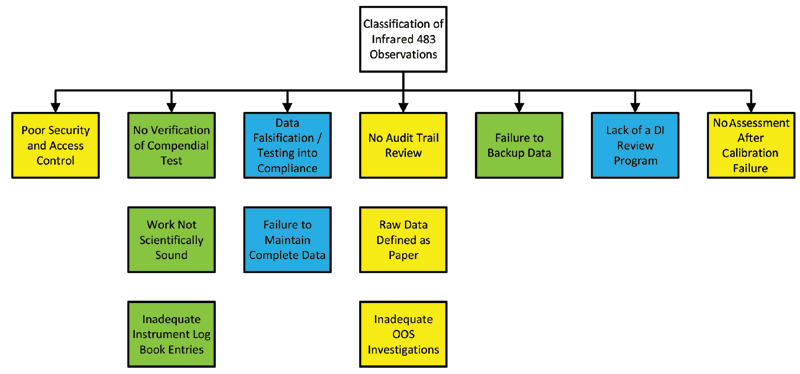
Figure 2: Infrared spectroscopy Form 483 observations as found by FDA inspectors during operational work.
- Poor Security and Access Control: This is the biggest problem with issues identified such as no security, all users have the same identity, and password thus making attribution of action impossible and conflicts of interest where all laboratory users have administrator rights. Some people will never learn! This is especially true when these citations against CDS have been made for the past 10–15 years. What is interesting in this case is that some laboratories have been cited because management had administrator access, confirming a requirement for application administration to be independent of the laboratory.
- Data Falsification/Testing into Compliance: This is another classic area for citations that is not limited to CDS, and are also found with IR systems. Citations here include data deletion, and retesting until a passing result is obtained. Some people never learn.
- No Audit Trail Review: Even when you have an audit trail in the application, it is ether turned off or if it is turned on the entries are not reviewed. There is even one citation where the audit trail is stored on a secure network, but the laboratory and QA staff cannot access it!
- Failure to Backup Data: This is a major problem when a laboratory is left to backup its own GMP records, and fails to do so. It is always better to get the IT department to back the data up on secure network drives.
In addition, there are the following gems of noncompliance:
- Work Not Scientifically Sound: A variety of novel and unscientific approaches to charm FDA inspectors, such as use of IR analysis for cleaning validation where lack of sensitivity to detect an analyte was the issue (for example, using an identification algorithm to compare spectra of cleaning wash samples with pure solvents). On the bright side, every cleaning validation passes.
- Inadequate Instrument Log Book Entries: The instrument log book was featured in an earlier "Focus on Quality" column (54); here there were five citations for inadequate log book entries, including the failure of a second person to review them.
- Lack of Procedures: Another evergreen classic of noncompliance. No procedure or work instruction available, and naturally no training records, either-two citations for one noncompliance! Come on, how easy do you want to make it for an auditor or inspector?
- Failure to Maintain Complete Data: Although closely associated with data falsification, the writing of the citations indicate that this is due to a laboratory error, such as losing rather than deleting electronic records. Also, there are signed paper printouts, but no accompanying electronic records-oops!
- Raw Data Defined as Paper: One of the main data integrity messages is that paper cannot be raw data when a computerized system is involved (55); unsurprisingly, this message has not got through to some laboratories, who then receive a 483 observation.
- Inadequate OOS Investigations: Invalidated OOS results are a key quality metric that the FDA have selected for GMP laboratories as part of their quality metrics program (56), and it is the lack of root cause analysis or finding a scientifically sound assignable cause for invalidating an OOS result that gains an inspector's attention.
Contributory Factors
Some of the factors that contributed to the observations reported in this article are:
- Historical IT perspective: Protection of the corporate network
- Deskilling of the analyst workforce: The move from specialist to generalist
- Pharmacopeia requirements are not harmonized for FT-IR.
Historically, the IT departments in many companies had a policy that made it harder for laboratories to attach instrument control computers to the corporate network. In principle, this was to protect the network, but the outcome can be proliferation of standalone systems, irrespective of the system capability. A busy laboratory can follow the path of least resistance, and implement standalone systems with the consequential impact of poor data backup and access control, for example. Some of the principal reasons for originally writing this article was the data integrity risks of identification by FT-IR spectroscopy; in particular, because there is a skill associated with the manual task of sample preparation, it will always be a higher risk from a data integrity perspective. How are decisions made about the quality of the sample preparation recorded and differentiated from identification failure?
Analysts in busy laboratories have tended to move away from specialist skills (in IR spectroscopy, for example), toward being more generalists. This trend contributes to some of the citations in this article, such as inappropriate and unscientific use of the technique. The difference between an IR spectroscopist and a part-time user was well documented over 20 years ago (57).
Another contributory factor, which is compounded by the deskilling of analysts, is the lack of harmonization of the pharmacopeia general chapters on identification by IR spectroscopy.
- How large should a difference between two infrared spectra be, before action needs to be taken?
- Where differences occur, some drug monographs require the sample and the reference material to be recrystallized to confirm the identification; how many laboratories do this?
- Even the process used to perform the identification can be different; some pharmacopeias include reference spectra that can be used, while others require that a reference material spectrum is recorded concordantly.
Where there is a lack of harmonization, the simplest route can be to ignore specific pharmacopeia requirements.
The fundamental challenge for identification by infrared (either IR or FT-IR spectroscopy) is the decision about how the comparison should be made. If spectra are compared by algorithms, the library and the limits used need to be validated. Ironically, if the decision is based on manual comparison of sample and reference spectra, this can be best accomplished using large printed spectra, with the investment focus on analyst training compared to library and algorithm validation. Although there are some other citations, as seen in Table II, we have chosen not to discuss them as they are single observations and may not be indicative of a trend.
Summary
In this column, we have taken 104 regulatory noncompliances for infrared analysis issued by the FDA and analyzed them for trends. Interestingly, 42% of noncompliances can occur before an instrument is operational, due to the purchase of poor software functions, or failure to validate, qualify, or calibrate the system. Noncompliances when an instrument is operational vary widely, but mirror those found with CDS, such as inadequate access control, data falsification, lack of complete data, inadequate backup, and no audit trail review.
Based on this review and the non-conformance findings in the Form 483 observations, it is apparent that identification by FT-IR spectroscopy is an area of focus during laboratory audits, and that it is a high-risk area with poor implementation of compliant solutions. As an example of this regulatory focus, Yunnan Hande received an FDA warning letter in 2015. The Form 483 observations include a range of data integrity observations, but the warning letter only focuses on identification by infrared (58).
References
(1) Able Laboratories Form 483 Observations. 2005 (2016); Available from: http://www.fda.gov/downloads/aboutfda/centersoffices/officeofglobalregulatoryoperationsandpolicy/ora/oraelectronicreadingroom/ucm061818.pdf.
(2) R.D. McDowall, Validation of Chromatography Data Systems: Ensuring Data Integrity, Meeting Business and Regulatory Requirements (Royal Society of Chemistry, Cambridge, United Kingdom, 2nd ed., 2017).
(3) H. Longdon and R.D. McDowall, LCGC Europe32, (In press) (2019).
(4) P. Smith, Pharm. Technol. 26(5), 48–51 (2014).
(5) FDA 483 Observations Cispharma, USA, April 23, 2012, FEI 3008276856 (Food and Drug Administration, Silver Spring, Maryland, 2012).
(6) FDA Warning Letter Cadila Pharmaceuticals Ltd, India, March 28, 2014, FEI 3002806711 (Food and Drug Administration, Silver Spring, Maryland, 2014).
(7) FDA Warning Letter Unimark Remedies, India, March 21, 2014, FEI 3005202703 (Food and Drug Administration, Silver Spring. Maryland, 2014).
(8) FDA 483 Observations Lynwood, USA, April 3, 2014, FEI 1000160562 (Food and Drug Administration, Silver Spring. Maryland, 2014).
(9) FDA 483 Observations Ohm Laboratories, USA, March 18, 2014, FEI 1000222352 (Food and Drug Administration, Silver Spring, Maryland, 2014).
(10) FDA 483 Observations Cosma S.p.A, Italy, January 15, 2015, FEI 3002806754 (Food and Drug Administration, Silver Spring, Maryland, 2015).
(11) FDA 483 Observations Younnan Hand, China, February 26, 2016, FEI 3002808537 (Food and Drug Administration, Silver Spring, Maryland, 2016).
(12) FDA Warning Letter Wockhardt, India, December 15, 2016, FEI 3002808500 (Food and Drug Administration, Silver Spring, Maryland, 2016).
(13) FDA 483 Observations Tianjin, China, September 2, 2016, FEI 3008256667 (Food and Drug Administration, Silver Spring, Maryland, 2016).
(14) FDA 483 Observations Tianjin, China, September 1, 2016, FEI 3007751421 (Food and Drug Administration, Silver Spring, Maryland, 2016).
(15) FDA 483 Observations Teva, Hungary, January 29, 2016, FEI 3002875215 (Food and Drug Administration, Silver Spring, Maryland, 2016).
(16) FDA 483 Observations Synbiotics, India, March 31, 2016, FEI 3008494993 (Food and Drug Administration, Silver Spring, Maryland, 2016).
(17) FDA 483 Observations Sun Pharma, India, July 29, 2016, FEI 3012032037 (Food and Drug Administration, Silver Spring, Maryland, 2016).
(18) FDA 483 Observations Spectrum Laboratories, USA, March 14, 2016, FEI 2246824 (Food and Drug Administration, Silver Spring, Maryland, 2016).
(19) FDA 483 Observations Sekisui Medical Co, Japan, June 17, 2016, FEI 3002806840 (Food and Drug Administration: Silver Spring, Maryland, 2016).
(20) FDA 483 Observations Olon S.p.A, Italy, February 5, 2016, FEI 3002806373 (Food and Drug Administration, Silver Spring, Maryland, 2016).
(21) FDA 483 Observations Natco Pharma, India, March 7, 2016, FEI 3004540906 (Food and Drug Administration, Silver Spring, Maryland, 2016).
(22) FDA 483 Observations Jinan Jinda, China, June 1, 2016, FEI 3004002973 (Food and Drug Administration, Silver Spring. Maryland, 2016).
(23) FDA 483 Observations Huntington, USA, June 24, 2017, FEI 1810414. (Food and Drug Administration, Silver Spring, Maryland, 2016).
(24) FDA 483 Observations Coral Drug Private Ltd, India, March 11, 2016, FEI 3003496619 (Food and Drug Administration, Silver Spring, Maryland, 2016).
(25) FDA 483 Observations Cheng Pong Chemical, China, April 22, 2016, FEI 1000174711 (Food and Drug Administration, Silver Spring, Maryland, 2016).
(26) FDA 483 Observations Belcher Pharmaceuticals, USA, May 13, 2016, FEI 1000526113. (Food and Drug Administration, Silver Spring, Maryland, 2016).
(27) FDA 483 Observations Bayer, Finland, May 15, 2016, FEI 1000350927 (Food and Drug Administration, Silver Spring, Maryland, 2016).
(28) FDA 483 Observations Apotex, India, June 3, 2016, FEI 3005466325 (Food and Drug Administration, Silver Spring, Maryland, 2016).
(29) FDA 483 Observations Anjan Drug Private, India, January 18, 2016, FEI 3005782924 (Food and Drug Administration, Silver Spring, Maryland, 2016).
(30) FDA 483 Observations 3M Health Care, UK, August 12, 2016, FEI 3002807506 (Food and Drug Administration, Silver Spring, Maryland, 2016).
(31) FDA 483 Observations Troy, USA, January 17, 2017, FEI 3001451565 (Food and Drug Administration, Silver Spring, Maryland, 2017).
(32) FDA 483 Observations Mitsubuishi Tanabe, Japan, September 22, 2017, FEI 3002808316 (Food and Drug Administration, Silver Spring, Maryland, 2017).
(33) FDA 483 Observations Lymol Medical Corp, USA, June 24, 2017, FEI 1221129 (Food and Drug Administration, Silver Spring, Maryland, 2017).
(34) FDA 483 Observations Kymos, Spain, July 18, 2018, FEI 3008661256 (Food and Drug Administration, Silver Spring, Maryland, 2017).
(35) FDA 483 Observations IDT Australia Ltd., Australia, December 8, 2017, FEI 3000219354 (Food and Drug Administration, Silver Spring, Maryland, 2017).
(36) FDA 483 Observations Genus Life Sciences Inc., USA, September 29, 2017, FEI 3003851100 (Food and Drug Administration, Silver Spring, Maryland, 2017).
(37) FDA Warning Letter Fresenius Kabi, India, May 24, 2017, FEI 3003519498 (Food and Drug Administration, Silver Spring, Maryland, 2017).
(38) FDA 483 Observations Daito Pharmaceuticals, USA, November 10, 2017, FEI 3002806779 (Food and Drug Administration, Silver Spring, Maryland, 2017).
(39) FDA 483 Observations Cambrex Profarmico, Italy, May 19, 2017, FEI 3003723076 (Food and Drug Administration, Silver Spring, Maryland, 2017).
(40) FDA 483 Observations ABS Corporation, USA, November 16, 2017, FEI 1950042 (Food and Drug Administration, Silver Spring, Maryland, 2017).
(41) FDA 483 Observations Vetter Pharma, Germany, January 17, 2017, FEI 3002270322 (Food and Drug Administration, Silver Spring, Maryland, 2017).
(42) FDA 483 Observations Laclede, Inc., USA, November 7, 2018, FEI 2022474 (Food and Drug Administration, Silver Spring, Maryland, 2018).
(43) FDA 483 Observations Kaken Pharmaceutical Co., Ltd., Japan, June 22, 2018, FEI 3002807376 (Food and Drug Administration, Silver Spring, Maryland, 2018).
(44) FDA 483 Observations Covinia, USA, May 15, 2018, FEI 2013342 (Food and Drug Administration, Silver Spring, Maryland, 2018).
(45) FDA 483 Observations, Carson, USA, November 19, 2018, FEI 2012546 (Food and Drug Administration, Silver Spring, Maryland, 2018).
(46) FDA 483 Observations CMIC, Korea, June 16, 2018, FEI 3013212450 (Food and Drug Administration, Silver Spring, Maryland, 2018).
(47) FDA 483 Observations Cambridge Major Laboratories, Netherlands, November 9, 2018, FEI 3004153149 (Food and Drug Administration, Silver Spring, Maryland, 2018).
(48) FDA 493 Observations Apotek Production Laboratories, India, June 1, 2018, FEI 3004967053 (Food and Drug Administration, Silver Spring, Maryland, 2018).
(49) FDA 483 Observations Acorn Inc, USA, August 30, 2018, FEI 2246848 (Food and Drug Administration, Silver Spring, Maryland, 2018).
(50) FDA 483 Observations G&W Labs, USA, February 15, 2018, FEI 2210277 (Food and Drug Administration, Silver Spring, Maryland, 2018).
(51) FDA 483 Observations Lupin, India, October 18, 2018, FEI 3009107538. (Food and Drug Administration, Silver Spring, Maryland, 2018).
(52) USP 41 General Chapter <1058> Analytical Instrument Qualification (United States Pharmacopoeia Convention Rockville, Maryland, 2018).
(53) 21 CFR 211 Current Good Manufacturing Practice for Finished Pharmaceutical Products (Food and Drug Administration, Silver Spring, Maryland, 2008).
(54) R.D. McDowall, Spectroscopy 32(12), 8–12 (2017).
(55) FDAGuidance for Industry Data Integrity and Compliance With Drug CGMP Questions and Answers, (Food and Drug Administration, Silver Spring, Maryland, 2018).
(56) FDA Guidance for Industry Submission of Quality Metrics Data, Revision 1 (Food and Drug Administration: Rockville, Maryland, 2016).
(57) G.Dent, Spectrochim. Acta, Part A 51, 2209 (1995).
(58) FDA Warning Letter, Yunnan Hande Biotech Co. Ltd., April 6, 2015 (Food and Drug Administration, Silver Spring, Maryland, 2015).
About the Guest Co-Author
Paul Smith

Paul Smith is a Global Strategic Compliance Specialist at Agilent Technologies.
About the Columnist
R.D. McDowall

R.D. McDowall is the director of R.D. McDowall Limited and the editor of the "Questions of Quality" column for LCGC Europe, Spectroscopy's sister magazine. Direct correspondence to: SpectroscopyEdit@UBM.com
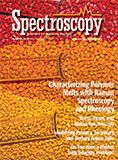
Newsletter
Get essential updates on the latest spectroscopy technologies, regulatory standards, and best practices—subscribe today to Spectroscopy.


